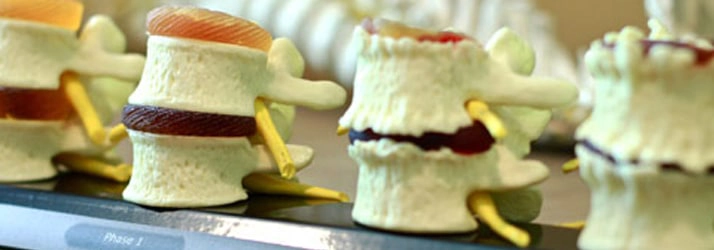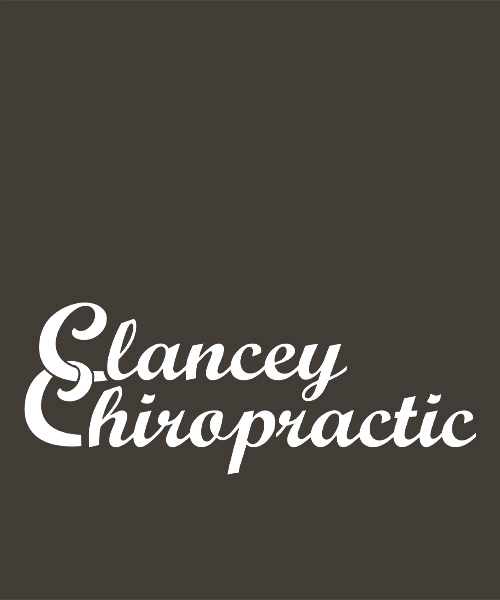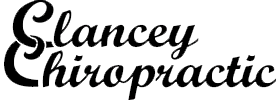Disc Disorders in Longmont

In the age of the Back Pain Epidemic, many have heard of the terms, "slipped discs, pinched nerves and disc herniations." All three terms basically describe the same condition which is linked to the relationship between spinal bones, known as "vertebrae," spinal nerves, and the intervertebral (meaning between the vertebrae) discs that are associated with them. Our excellent staff at Clancey Chiropractic, PC can help with disc injuries in Longmont.
Disc Disorder Treatment - Slipped Discs, Pinched Nerves, And Disc Herniations in Longmont
A short course in anatomy is helpful to understand the intimate, albeit - sometimes very painful - the relationship between the vertebrae, discs, and nerves.
The Spine
The spine is comprised of 33 bones and 24 discs that are stacked up upon each other. One point of clarification about the 33 bones of the spine is that the cervical spine or neck contains 7 segments, the thoracic spine or mid-back contains 12 segments, the lumbar spine or low back contains 5 segments, the sacrum contains 5 segments that are fused together, and the coccyx also knows as the "tail bone" is also fused containing 4 segments.
- Cervical 7, named C1-C7
- Thoracic 12, named T1-T12
- Lumbar 5, named L1-L5
- Sacrum 5 (fused), named S1-S5
- Coccyx 4 (fused), named C1-C4
- Total 33 vertebral segments
The Discs
Intervertebral discs (IVDs) are the spinal column's shock absorbers. These discs cushion the vertebral segments (from C2-3 through L5-S1) and allow the spine to twist and bend. Each vertebral disc is composed of two main parts, a soft inner nucleus, and a tough fibrous outer wall. A disc's outer wall can be weakened by the normal wear of aging or by traumatic injury, allowing the nucleus to bulge or break completely through the wall.
The Nerves
At each level of the spine, spinal nerves exit the spine through the space created by the vertebra and discs. After exiting the spine, the spinal nerve connects to muscles so you can move, skin so you can feel, and organs so they can function (see diagram below).
These nerves can become "pinched," or irritated by either the vertebrae or the discs. In conditions such as degenerative joint disease or spinal arthritis, bone spurs are responsible for the "pinching," whereas with disc herniations it is the disc that does the pinching of the spinal nerves.
Disc Herniation Symptoms
Disc herniations are common and can result from aging or injury. Although disc herniation can occur at any spinal level, the cervical (neck) and lumbar (low back) regions of the spine are most commonly implicated. A herniated disc can press harmfully against the spinal cord or nerve roots, causing burning, tingling, or numbness at the site of the rupture or in other areas served by the nerve root.
Symptoms of a herniated disc vary depending on the location and severity of the herniation. A herniation in the cervical spine can cause problems in the neck, shoulders, arms, and hands. A herniated disc in the lumbar spine can result in pain, burning, tingling, and or numbness that radiates from the lower back down to one or both legs and/or feet.
History, Examination, and Disc Disorder Treatment
In preparation for effective disc disorder treatment, comprehensive consultation and examination are necessary. The focus of this is to determine the cause of the irritated nerve. Is it a bone irritation, a disc irritation, or perhaps both requiring disc disorder treatment?
Disc Disorder Treatment and Spinal Nerves
A disc disorder treatment plan begins with a thorough examination during which a chiropractor evaluates the patient to learn about the person's history and concerns. The chiropractor may examine the patient's posture, skeletal structure, and movement to look for abnormalities that may require correction. The chiropractor may also request x-rays to get a clear view of your spine. Once the underlying source of the problem has been identified, the chiropractor can tailor a comprehensive care plan based on the patient's individual needs.
Chiropractic care can be a safe, non-invasive, and effective method for managing herniated discs. Spinal adjustments, traction, decompression therapy, therapeutic stretches, and exercises may be beneficial. Other care options may include cold or heat therapy, electric stimulation or ultrasound, and lumbar bracing. Surgery may be required but is recommended in less than 5% of all disc herniation cases.
Call us today for an evaluation to see if chiropractic can help you!! (303) 651-2060!
Monday
Closed
Tuesday
8:00am - 5:45pm
Wednesday
7:45am - 5:45pm
Thursday
7:45am - 5:45pm
Friday
Closed
Saturday & Sunday
Closed
Clancey Chiropractic, PC
195 South Main Street #1
Longmont, CO 80501



